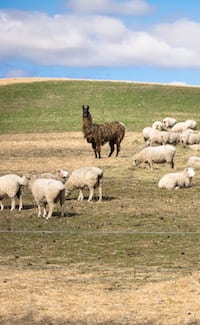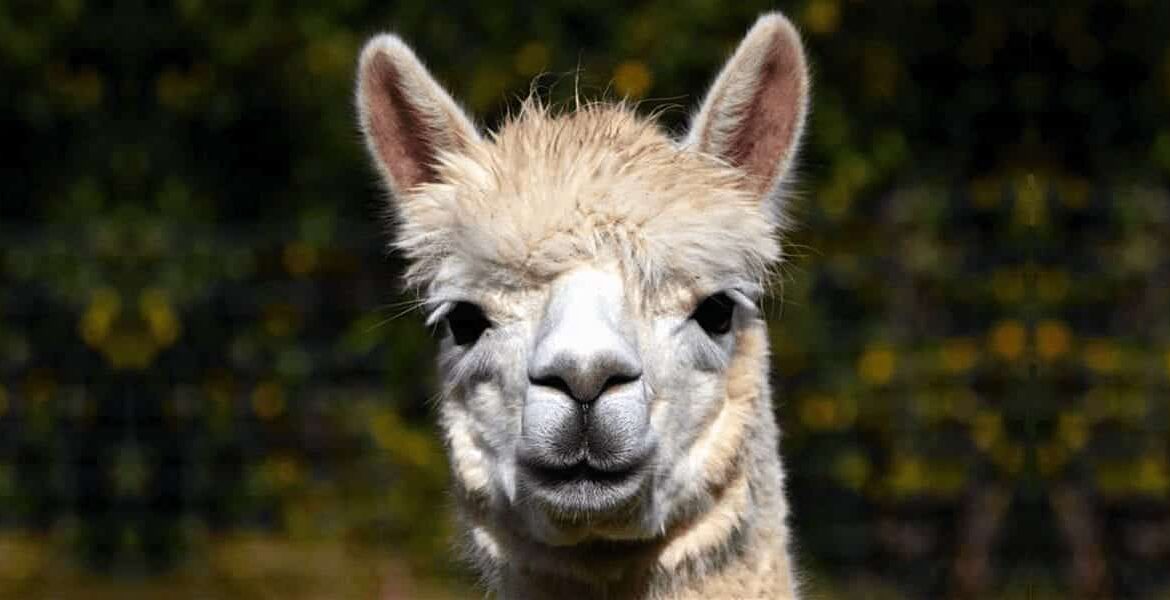Creating space for more authentic and inquiry learning in the classroom  Every day on my way to work I drive by this farm that has a herd of sheep grazing in a giant field. And every time I see them, I notice the sheep are doing the same thing sheep do every day. Sure, they may move to another patch of grass or huddle in groups of five instead of four, but these creatures are following the same routine every single day. They are just being sheep.
Every day on my way to work I drive by this farm that has a herd of sheep grazing in a giant field. And every time I see them, I notice the sheep are doing the same thing sheep do every day. Sure, they may move to another patch of grass or huddle in groups of five instead of four, but these creatures are following the same routine every single day. They are just being sheep.
 Amongst these sheep there is a single llama. Why this sheep farm feels the need to have a llama I do not know. What I do know is that this llama stands out in stark contrast to the sheep. It does not take me more than a few seconds to locate my furry friend. And why can I find him so quickly? Yes he looks different than everyone else, but more importantly, he acts different than everyone else. While the sheep constantly have their head to the ground, chewing their grass, the llama is picking his head up and moving it in all sorts of interesting ways. He is unique. He stands out from all of the sheep.
Amongst these sheep there is a single llama. Why this sheep farm feels the need to have a llama I do not know. What I do know is that this llama stands out in stark contrast to the sheep. It does not take me more than a few seconds to locate my furry friend. And why can I find him so quickly? Yes he looks different than everyone else, but more importantly, he acts different than everyone else. While the sheep constantly have their head to the ground, chewing their grass, the llama is picking his head up and moving it in all sorts of interesting ways. He is unique. He stands out from all of the sheep.
I sometimes feel the exact way about our educational system. When I walk into a classroom, more often than not, students are lined up in rows, being directed by the teacher to complete tasks as a whole, and shooed should they try and break away from the pack. The teachers expect students to be compliant, do the tasks set out for them, and produce what is expected of them. They are in essence, following a routine. Of course, by doing this we are teaching kids to be sheep.
Here is the most difficult part about trying to teach sheep; there are really only two methods that work. The first is you hire a sheepherder who has this stick. He watches carefully to make sure no sheep is getting out of line of deviating from the other sheep. If one does, he pokes her with his shepherd’s crook to make sure she goes back to doing what he wants her to do. The second way is you have a herding dog whose job it is to run around corralling these sheep, nipping at their hind legs and barking at them in order to make sure they are being compliant. It certainly feels like these methods are easier for teachers to keep kids in line but they do not produce llamas.
 Why is it so important to produce llamas? What will eventually happen to these sheep is they will go to college and continue to be sheep. And who can blame them? This is all they have been trained to do. Then when they go out into the real world, there is nothing that distinguishes them from the rest of the herd of sheep. They all have great GPAs, they all have met the course requirements of their schooling, and they are all eager, although as sheep the only thing they are eager for is more grass. Imagine you were hiring folks for your company, one that requires employees to be creative, think fast on their feet, and be adaptable. As you are interviewing these sheep, there is truly nothing that separates them from the other sheep. Sure, one might be slightly better than another, but in the end, they are all just sheep. These sheep certainly can follow directions, they work hard, they get along with the other sheep, and they are not going to give you any problems. This is not going to move your company.
Why is it so important to produce llamas? What will eventually happen to these sheep is they will go to college and continue to be sheep. And who can blame them? This is all they have been trained to do. Then when they go out into the real world, there is nothing that distinguishes them from the rest of the herd of sheep. They all have great GPAs, they all have met the course requirements of their schooling, and they are all eager, although as sheep the only thing they are eager for is more grass. Imagine you were hiring folks for your company, one that requires employees to be creative, think fast on their feet, and be adaptable. As you are interviewing these sheep, there is truly nothing that separates them from the other sheep. Sure, one might be slightly better than another, but in the end, they are all just sheep. These sheep certainly can follow directions, they work hard, they get along with the other sheep, and they are not going to give you any problems. This is not going to move your company.
But then this person comes in and she looks at things differently. She does not always do what she is asked, but what she does is unique and innovative. Businesses have been continually grumbling that there are not enough llamas coming into the workforce, most everyone is a sheep. And if most everyone is a sheep, they are just going to be produce more sheep. Apple, Google, Amazon, and other innovative companies are not going to move the needle with sheep. They need llamas to produce their innovative ideas.
The issue that llamas face is that because they are not as compliant as other students, the teacher does not view them as someone who is trying to think of things in another way, but as a troublemaker. These llamas, especially the really inquisitive ones, might have a difficult time being identified as gifted because the teachers want the sheep, not the llama. They are easier to handle. In many schools the gifted identification process is first based on a teacher recommendation. How many gifted llamas are not being identified and provided the services that will allow them to continue to be llamas.
 How do you make a llama? Simple, you give it space to be a llama. Instead of intently watching your herd of sheep and correcting them with you shepherd’s crook should they make even a single step out of line, you should let them wander wherever they like. This means allowing for more authentic and inquiry learning in the classroom. If you are covering a topic and a student seems genuinely inquisitive about a certain aspect of it, you should have the opportunity to allow this student the space in order to explore this topic further? The excuse often becomes that the teacher has a lot of material to get in and students needs to stay with the pack? Of course, this is how we produce sheep, not llamas.
How do you make a llama? Simple, you give it space to be a llama. Instead of intently watching your herd of sheep and correcting them with you shepherd’s crook should they make even a single step out of line, you should let them wander wherever they like. This means allowing for more authentic and inquiry learning in the classroom. If you are covering a topic and a student seems genuinely inquisitive about a certain aspect of it, you should have the opportunity to allow this student the space in order to explore this topic further? The excuse often becomes that the teacher has a lot of material to get in and students needs to stay with the pack? Of course, this is how we produce sheep, not llamas.
It used to be in schools that when a person started to indicate that they might feel more natural writing with their left hand, teachers forced them to write with their right hand because that was the way most everyone else wrote. We did not want kids to stand out or be different than all the other kids. In today’s schools, are doing the same thing by forcing kids who think differently or are innately curious to be like everyone else. Instead, we need to nurture these children and allow their curiosity to run rampant. We need to let them be llamas.
Author
Todd Stanley is the author of several education books including Project-Based Learning for Gifted Students and Performance-Based Assessment for 21st-Century Skills, both for Prufrock Press.
Additionally, he wrote a series of workbooks for them entitled 10 Performance-Based Projects for the ELA/Math/Science Classroom. He wrote Creating Life-Long Learners with Corwin Press and is a regular contributor of blogs to Corwin Connect which can be accessed at https://corwin-connect.com/author/toddstanley/.
You can find out more about Todd at MyEdExpert.com and you can follow him on Twitter.
Further Reading
- edCircuit – Todd Stanley Columns
- Education Week – A year ago SCOTUS raised the Special Ed Bar. What’s happened since?
- HuffPost – This ‘Forgotten’ Part Of Special Ed Could Lead To Better Outcomes For Students


